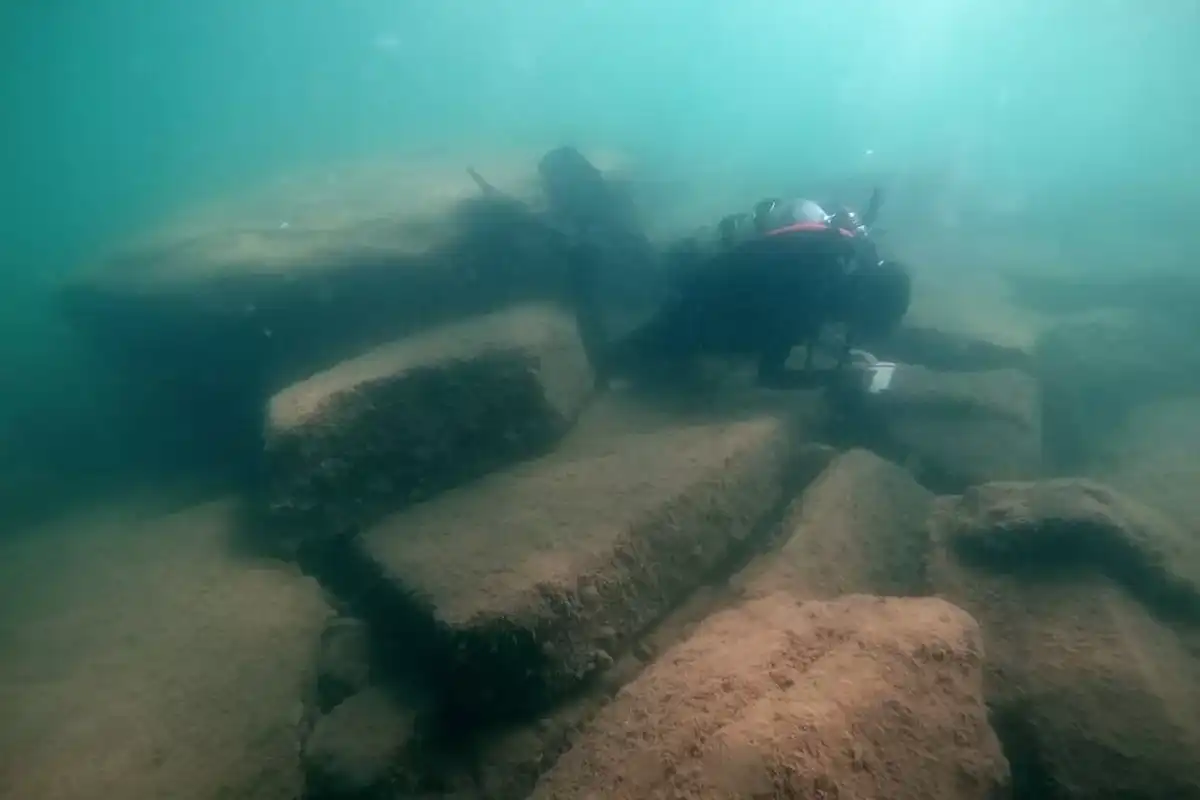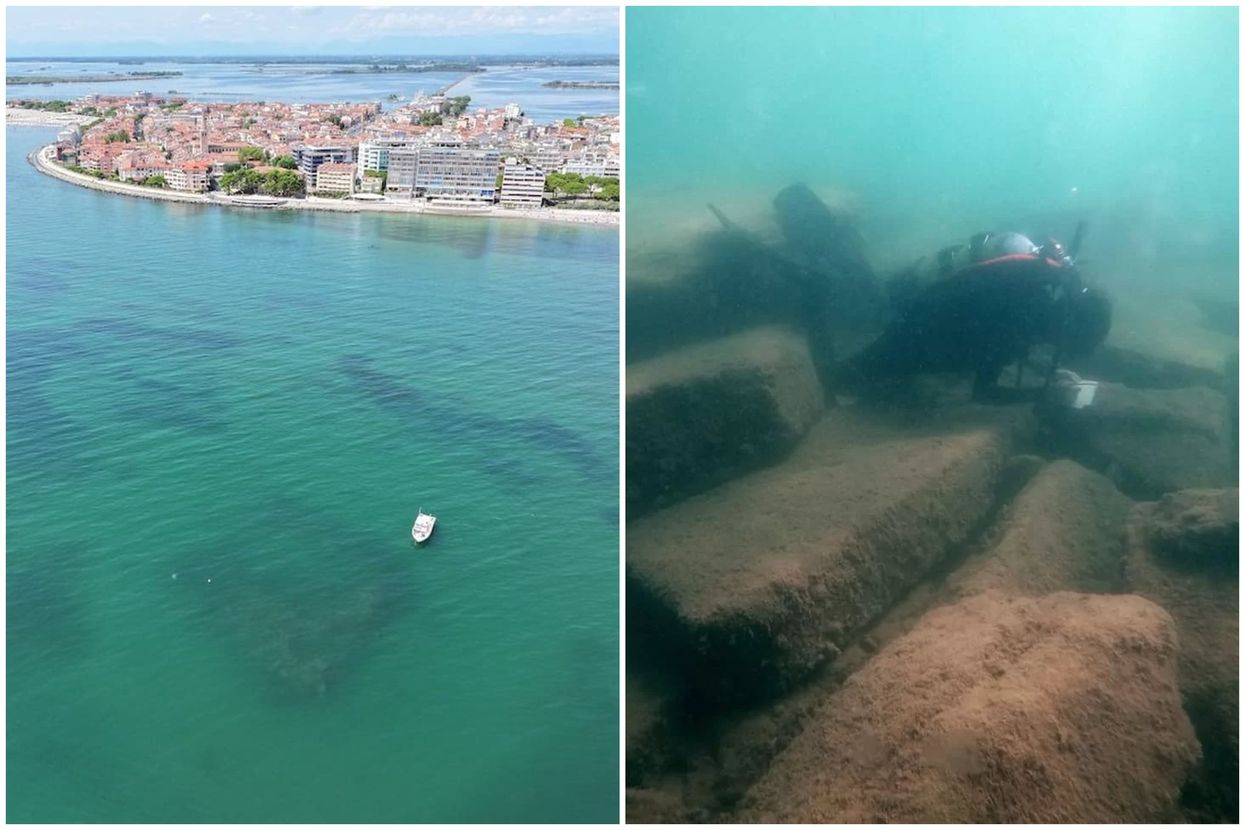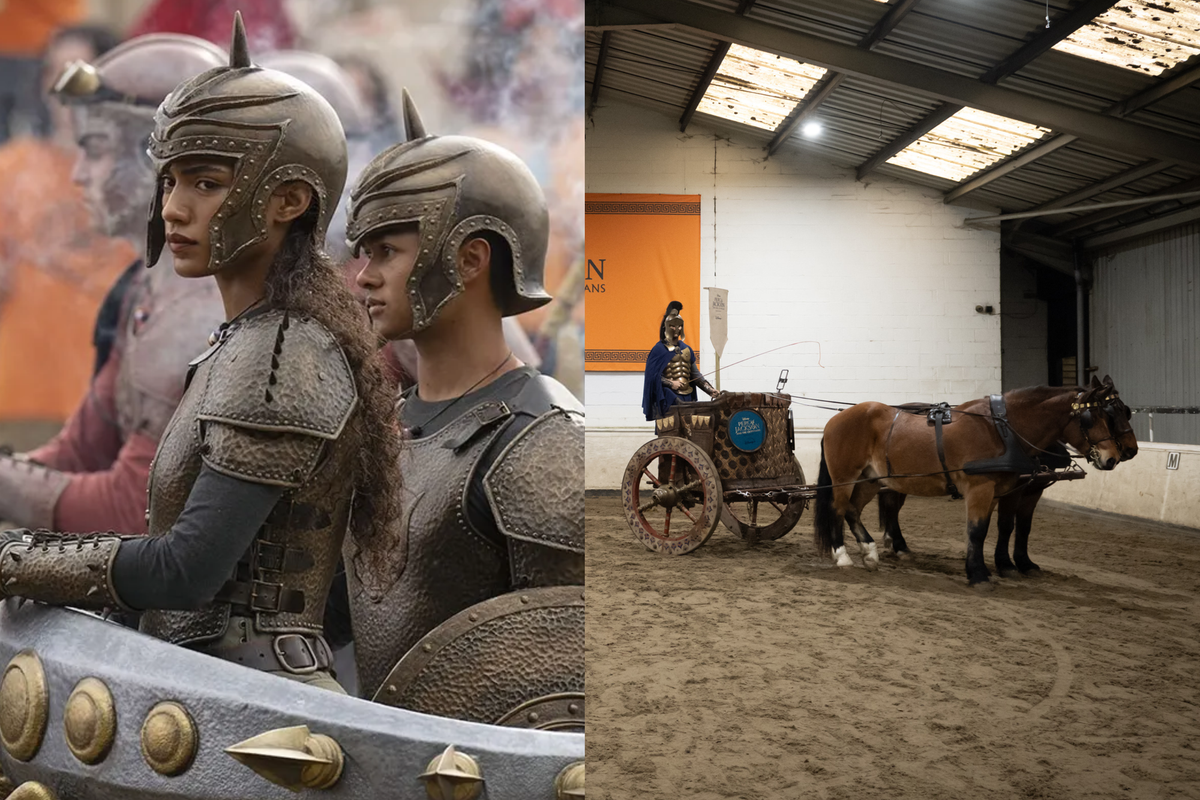Harriet Brewis
Oct 15, 2024
Archeologists Discover Underwater City With Stone Roads Dating Back Thousands of Years
ZMG - Amaze Lab / VideoElephant
Archaeologists have discovered a long-lost slice of history submerged deep beneath the surface of the Adriatic Sea.
The UNESCO World Heritage site of Aquileia is hailed as one of the best preserved Roman cities in Italy, having once been one of the biggest and most bustling towns in the ancient empire.
But parts of the city have lain hidden beneath the waves after being swallowed by the surrounding sea centuries ago. And now, underwater experts have made some striking finds while exploring these areas, most notably two shipwrecks and a mysterious, unidentified monument.
These forgotten treasures now sit at the bottom of northeast Italy’s Grado Lagoon which was on the outskirts of Aquileia during Roman times, and which researchers believe once featured a vast and important port.
Arguably the most interesting of the new discoveries, made by the team of underwater archaeologists from the University of Udine, is a strange rocky monument located some 4.2 metres (around 14 feet) below the surface of the lagoon.

The site, known as the Piere de San Gottardo (Docks of San Gotardo), is located just over 1.5 kilometres (around one mile) southeast of the lake’s mouth, La Brujula Verde reports.
It consists of a series of large stone blocks, placed in a non-random arrangement. This, along with signs of work on the blocks, suggests that the structure was manmade and once served a particular function.
However, what this function was remains unclear.
Nearby, the team has also uncovered some funerary monuments, dating to the second century AD, which were first spotted back in 1933. And yet, it has taken until now for researchers to carry out detailed investigations to study the nature of the sites.

The choice to investigate the area was, in part, prompted by the identification, in 2022, of two Roman-era shipwrecks.
The first shipwreck, named Grado 5, has been dated between the second century and the beginning of the first century BC, according to La Brujula Verde.
And the second, later named Grado 6, was found just two kilometres (around 1.2 miles) away, and also dated back to the second century.
Experts believe that the finds will help them piece together and reconstruct the ancient landscape that lies between Aquileia and Grado, helping them to better understand the ancient interaction between land and sea.
Mario Anzil, councillor for culture in the Friuli Venezia Giulia Region, said in a statement that the research will allow the team “to rebuild and shed light on unpublished aspects of maritime relations that Aquileia boasted at that time, enlightening and enriching investigations.”
Sign up for our free Indy100 weekly newsletter
How to join the indy100's free WhatsApp channel
Have your say in our news democracy. Click the upvote icon at the top of the page to help raise this article through the indy100 rankings
Top 100
The Conversation (0)














